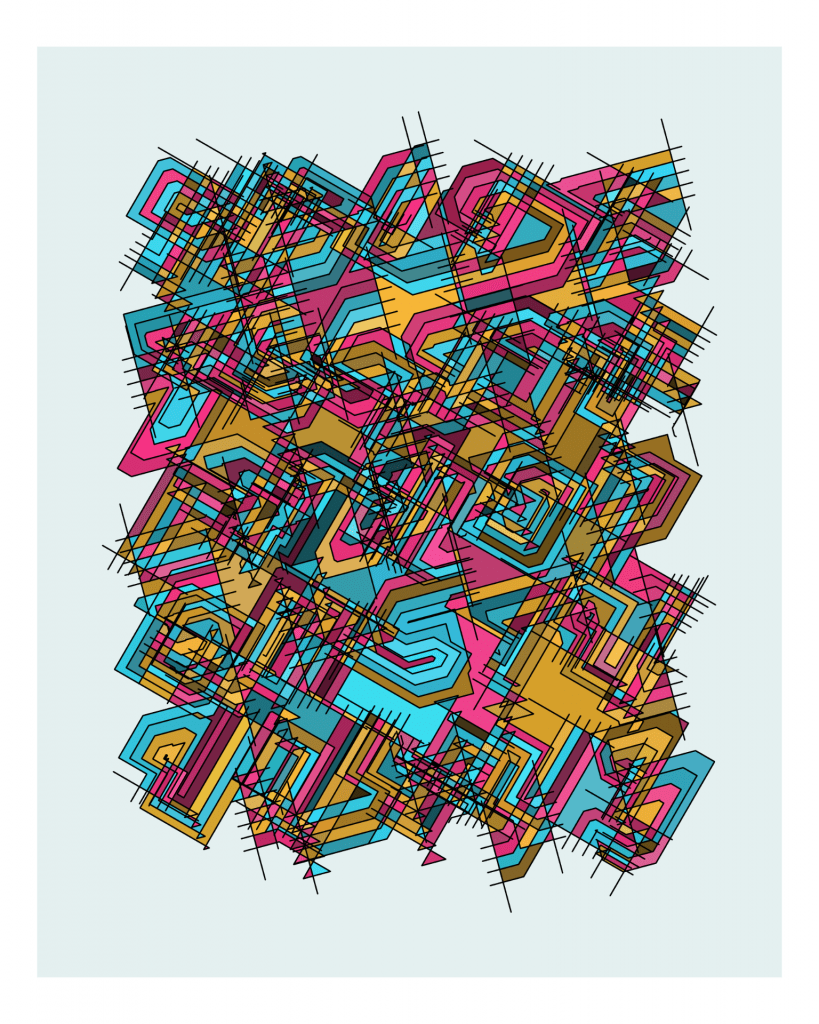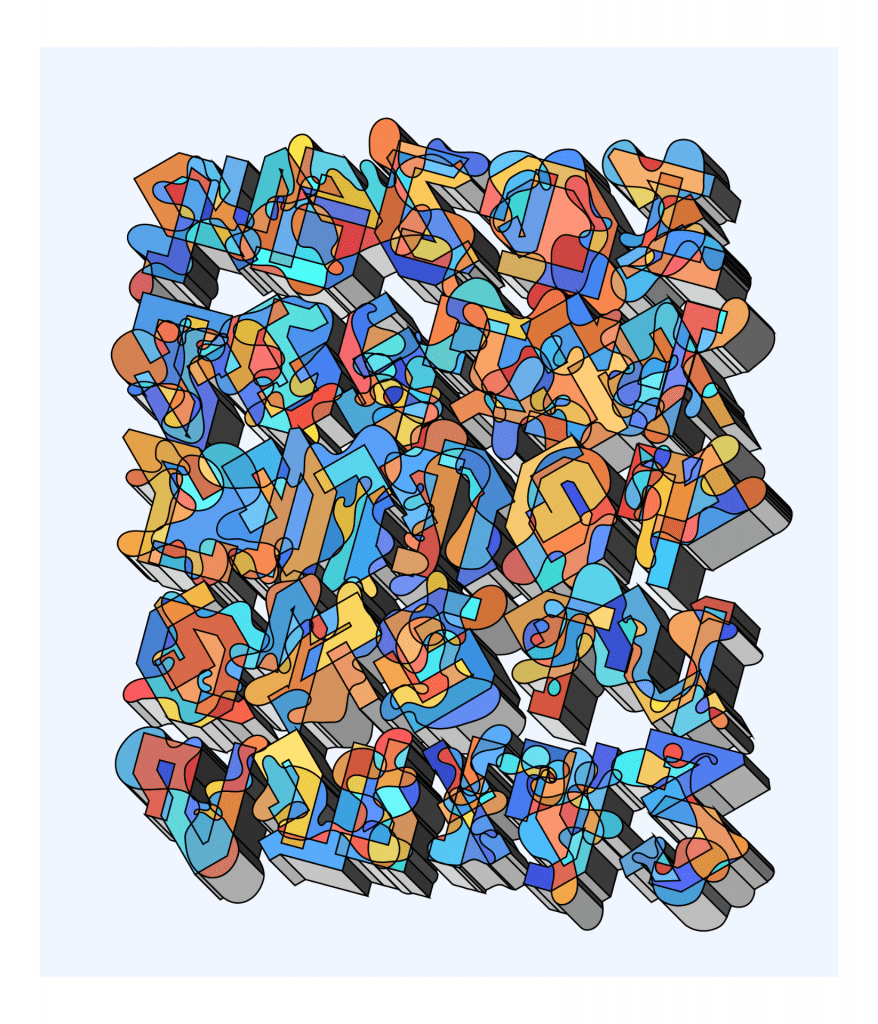Daniel Berio (drand48@gmail.com)
Many of my works explore a concept that I call Graffitization: The (computational) process that applies the stylistic principles of graffiti art to computer generated forms.
In this specific work, I apply this concept to the letters of the Latin alphabet, organized in a grid. The letter structures are derived with a procedure that extracts a plausible stroke structure from a glyph in a font, approximating the way in which the glyph could be written with a pen or brush. These structures are first simplified and abstracted and then used as a scaffold to combine strokes and other visual elements in a way that is inspired to my practice as a graffiti artist.
The presented images show different vector designs produced with this system. These designs are intended to be printed with color on paper. The presented videos show a pen plotter drawing the paths produced by this same system. As the paths are drawn, another program incrementally computes a planar arrangement that is used to fill new areas of the drawing as it is being produced. The areas are projected on top of the drawing surface with conventional projection-mapping techniques, resulting in a dynamic and temporary coloring of the permanent marks left by the pen on paper.






Artist Bio
You must be logged in to post a comment.